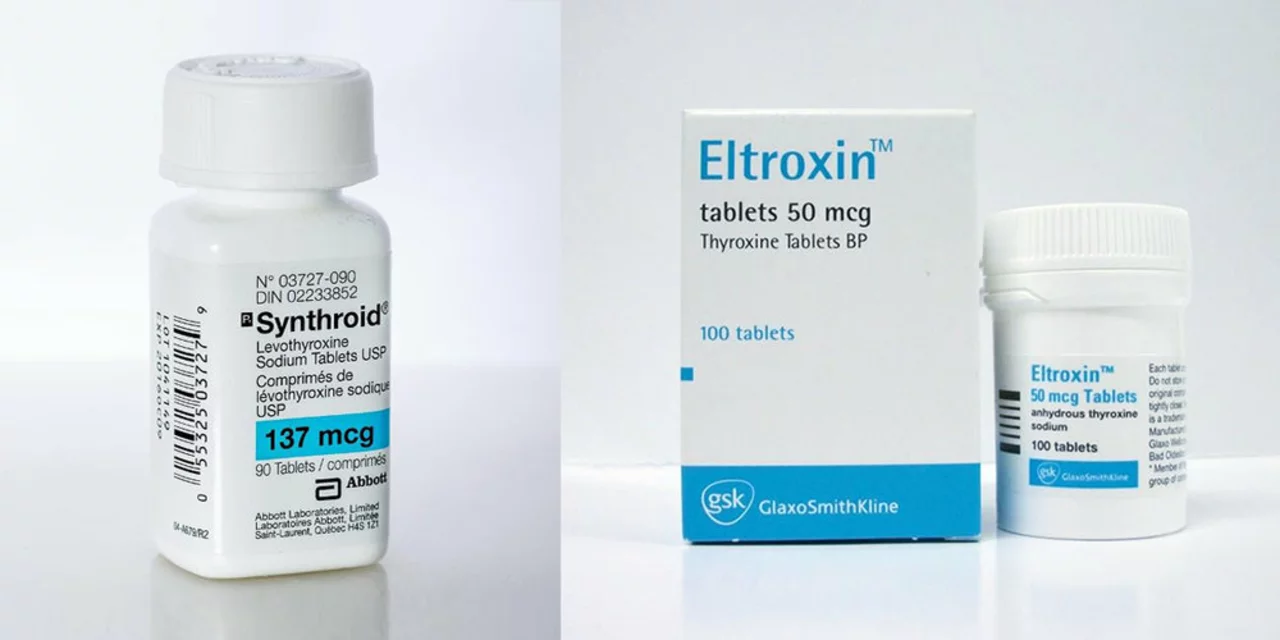Levothyroxine is the most common treatment for hypothyroidism. If your doctor prescribed it, you probably want clear, useful tips, not medical jargon. This page explains what levothyroxine does, how to take it, common side effects, interactions to watch for, and simple steps to get the best results.
Levothyroxine replaces the thyroid hormone your body no longer makes enough of. People with underactive thyroid, after thyroid surgery, or after certain treatments for hyperthyroidism often need it. It helps restore normal energy, digestion, mood, and body temperature control.
Take levothyroxine on an empty stomach, ideally 30 to 60 minutes before breakfast. Swallow the pill with a full glass of water. If your routine forces a different time, pick one and stick to it daily. Consistent timing helps keep hormone levels steady. Avoid taking calcium, iron, antacids, or some supplements within four hours of your dose, they can block absorption.
Common starting doses depend on age, weight, and heart health. Younger, healthy adults often start low and increase over weeks. Older adults or people with heart issues start lower to avoid side effects. Your doctor will check your TSH and free T4 blood tests and adjust dose until levels stay steady.
Side effects usually mean the dose is too high. Symptoms include fast heartbeat, jitteriness, sweating, or trouble sleeping. If you notice these, call your provider, do not stop abruptly. Stopping suddenly can cause fatigue, weight gain, and slow thinking.
Interactions matter. Many drugs and supplements change how levothyroxine works. Common interactions include iron, calcium, cholestyramine, sucralfate, and certain antacids. Some antidepressants and seizure medicines can also affect levels. Share a full list of meds with your doctor and pharmacist.
Can you buy levothyroxine online? Yes, but be cautious. Use licensed pharmacies that require a valid prescription. Avoid sites that promise no prescription or unusually low prices, counterfeit or substandard drugs are real risks. If buying online, confirm the pharmacy is licensed and has clear contact info and pharmacist access.
If you're switching brands or between generic and brand-name levothyroxine, tell your doctor. Small differences in absorption can change your blood tests. After any switch, expect a follow-up test in 6 to 8 weeks to confirm dose remains right.
Special situations include pregnancy, weight changes, and major illnesses. Pregnancy often requires a higher dose. If you start or stop other medications, or if your weight changes significantly, ask your doctor to recheck thyroid tests. Keep a list of symptoms and lab dates to track progress.
Bottom line: take levothyroxine exactly as directed, keep timing and supplements consistent, watch for side effects, and work with a licensed provider and pharmacy. Regular blood tests and clear communication make treatment safer and more effective.
When you travel, keep pills in original packaging with your prescription. Store them cool and dry. If you miss a dose, take it when you remember, but don’t double up. Ask your pharmacist.

As a woman going through menopause, I've discovered that it's essential to understand the relationship between levothyroxine and menopause. Levothyroxine is a medication commonly prescribed to treat hypothyroidism, which can often occur during menopause. It's important to monitor our thyroid levels during this time, as symptoms of hypothyroidism can be similar to those of menopause, making it difficult to differentiate between the two. By staying informed and working closely with our healthcare providers, we can ensure proper treatment and management of both conditions. Ladies, let's not forget to take care of our overall health during this significant life transition.
CONTINUE READING